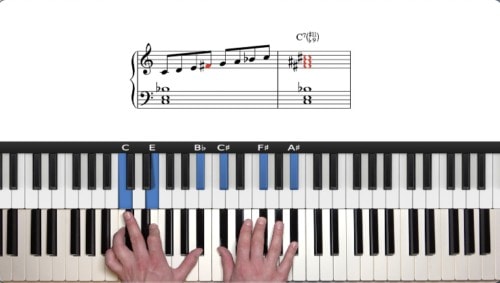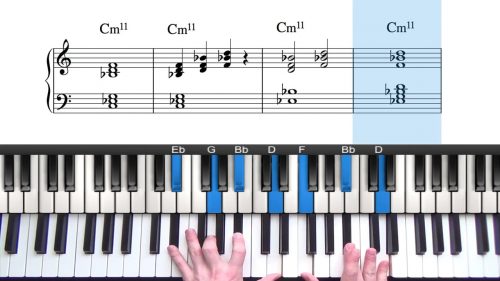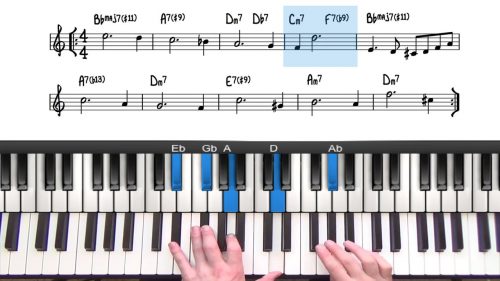“Body and Soul” – Extended & Altered Chords
In this lesson we dive into the B section of “Body & Soul” focusing on extended and altered chord voicings to add more colour and depth to our playing. In the previous lesson we stuck to basic root-3rd-7th voicings and while these voicings are simple and effective, we’ll now expand upon them to create richer harmonies.
Bi-Tonal Chord Voicings
As we work through the B section we add bi-tonal sounds by layering upper structure triads into our chord voicings. When voicing the E-11 chord, try playing an E minor triad in the left hand and a D major triad in the right. This creates a minor 11 sound giving us a fuller and richer voicing.
For the G-7 chord, we can play a G-9 rootless voicing in the left hand and an F major triad in the right. This combination creates a bitonal flavour of G minor and F major, adding complexity to our chord progressions.
Altering Dominants & Upper Structures
For the A7 and E7 chords, try using sharp 5ths or flat 9ths to explore different altered dominant colours. These alterations add tension and a little dissonance into the harmony and create a heightened sense of resolution at the end of the first line of the B section.
We explore a number of upper structure triad voicings that can be used to enrich the harmony, and also as fills and runs in the turnaround/modulation sections. Always remember that upper structure triad voicings can be arpeggiated to create rich and colourful runs and fills.
We examine a Beegie Adair style fill using a Eb13#11 shape to smoothly connect the D major and D minor tonalities. The best way to view this fill is simply an arpeggiated F triad over the Eb7 shell in our left hand.
We finish by exploring chord alterations on the final line of the B section and discuss the importance of ‘testing’ alterations to see if they fit with the harmony and melody of the tune.
Practice Tips
-
Melody Clashes: When the melody includes the root, avoid playing the major 7th in your chord. Instead, use a simpler triad or a 6th chord to keep the harmony clean.
-
Voice Leading: When playing 2-5-1 progressions, focus on the 7th falling to the 3rd to guide your transitions. We can then introduce other chromatic voices such as the 5th to the b9 or 9th to the b13.
-
Alter Dominant Chords: Don’t be afraid to explore chord alterations for the dominant chords to create additional tension before resolving to the tonic.
-
Bi-Tonal Chords: Layering two different chords, such as a rootless G-9 with an F major triad create a rich bi-tonal quality.






